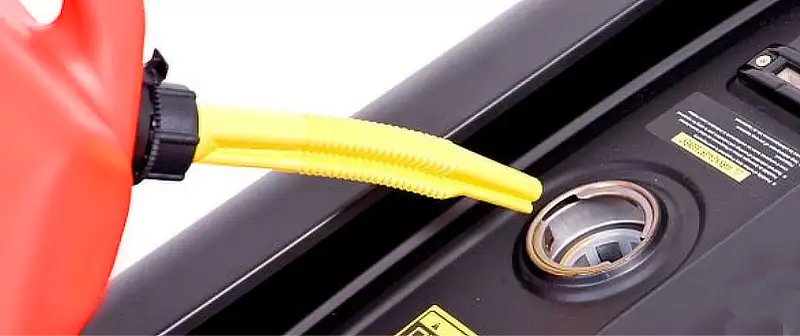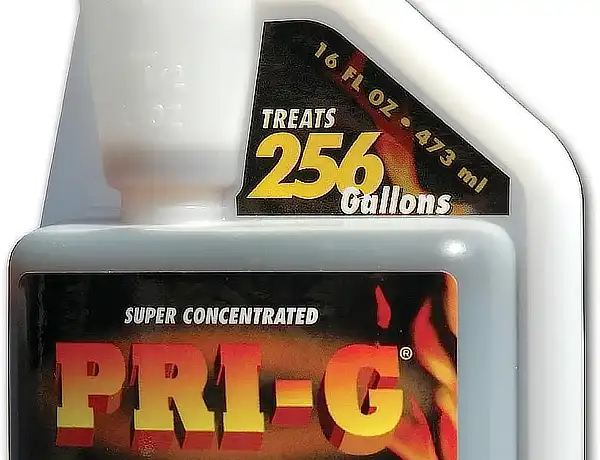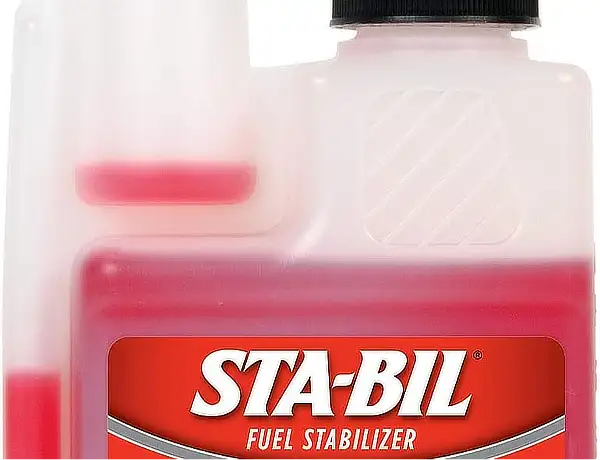Fuel Stabilizer For Generator Use

A fuel stabilizer for generator use. It’s one of the best things you can do. With it comes peace of mind that your generator should start right up after having set idle for periods of time (in between occasional running to be sure it still works).
Here’s some of my experience and tips using fuel stabilizer for a generator, or any other motorized utility such as a snowblower, lawn mower, boats, etc.. Things which may sit around unused for a time (e.g. over winter) with gasoline in the tank (and/or carburetor).
I also have two recommendations. Both good choices. One, I believe, perhaps a bit better.
USE FUEL STABILIZER IN YOUR GENERATOR FUEL
“The neglect of stored fuel is one of the weakest links in disaster preparedness. It is estimated that more than one half of the power generator failures that occur in emergencies can be directly attributed to fuel degradation.”
Power Research Inc. (PRI-G)
Not only might you have your own generator for use during a power outage, there are tens of thousands of generators at the ready in a wide variety of settings. This includes places such as hospitals, airports, cell phone sites, internet service providers, fire and police stations, large apartment buildings, office buildings, data & telecommunication centers, drinking water pumping stations, nuclear power plants, and many more…
The problem is, most generators just sit there unused for much of their life. And if there’s fuel in them, eventually it’s going to go bad! The question is, how long, and what can you do about it..
OLD FUEL GUMS UP THE WORKS
When you need it the most, your generator might not start – because you didn’t treat the gas with any fuel stabilizer additive. And eventually the old gas gummed up the works.. What you need is something like this:
PRI-G for 2 and 4 Stroke Engines
(amzn)

The weakest link in these generators is the fuel which often sits unused or not rotated for long periods of time. Even when running your generator a few times a year, the gas keeps getting older.
The problem is, the generator may become ‘gummed up’ or won’t run due to old fuel sitting in the tank, lines, fuel filter, carburetor, and even your fuel cans. Many of these perfectly good generators will fail when they are needed most – because of old fuel.
It is said that most fuel will maintain optimum freshness for ~ 3 months in good storage conditions. Most gasoline will continue to perform in the engine well afterwards, however, it does degrade over time.
Unfortunately, this relatively short ‘optimum’ shelf life can be bad for backup generators.
There is a solution to this problem however:
BEST FUEL STABILIZER FOR A GENERATOR
Fuel treatment with fuel stability additives.
There are many fuel additive treatments to choose from, and they are available at automotive stores, hardware stores, etc..
Many of them are formulated to keep fuel fresh for up to 1 year. Others, even longer.
PRI-G Fuel Stabilizer
Having researched this issue, I have come to the conclusion that PRI-G fuel additive is apparently better than the rest (though I’m not knocking the others which are fine too). While PRI-G costs a bit more than the others, it will treat fuel for years without issue.
The company is called Power Research Inc., and they make a product line under the name PRI-Products. Here’s their fuel stabilizer (gas or diesel) at their site on amzn..
( PRI-G ) Gasoline Fuel Additive
( PRI-D ) Diesel Fuel Additive
I believe it’s worth the extra few bucks than some competitors. Why? Because a generator can be a pricey investment. You want to protect it, and you want it to reliably start up when you need it most.
The PRI-G fuel additive listed above (16 ounces) will treat 256 gallons of gasoline. At the time of this update, the approximate cost per gallon to treat gasoline with PRI-G is only 11 cents. That’s no big deal to protect a generator.
Also, treat the fuel in your gas cans for assured shelf life longevity.
Squeeze an amount of PRI-G just above the 1/4 ounce line into the built-in measuring dispenser to treat 5 gallons. Technically, 0.3 ounces.
PRI-G will restore old fuel
“PRI can bring back to life most gasoline and diesel fuels of the worst condition. PRI has been independent laboratory tested on 10-13 year old fuels, and has restored the fuel to usable condition.”
The Shelf Life of PRI fuel stabilizer
PRI has an indefinite shelf life when sealed. It should be used within 3 years once it is opened. Store in a cool place out of direct sunlight.
Ken adds: I had not thought about the difference in shelf life for fuel stabilizer AFTER it has been opened. It’s important to keep in mind. You may have some fuel stabilizer (PRI or even STA-BIL) that has been sitting around opened for many years. You might want to consider replacing it..
“We have used this fuel stabilizer product for years in gas tank fillups for all of our shed power toys and lawn tractor. We live in New England, so our tools are stored for the winter, including the gasoline inside of them. Come spring, we have never encountered any problems with gummed-up carburetors or gas-lines since starting to use this product.”
~ one of many positive reviewers on amzn
STA-BIL FUEL STABILIZER
If you look for fuel treatment at your local stores, there’s one brand often seen:

STA-BIL
(amzn)
I have used STA-BIL fuel stabilizer myself for some time (with no problems).. Although I have usually rotated or used my fuel storage well before one year.
I will relay a story for this update. I was recently given a snowblower that had been sitting unused for approximately 3 years. The fuel had originally been treated with STA-BIL. And there was fuel in the carb too. Anyway, I was surprised when that snoblower started up on the very first pull!
The Shelf Life of STA-BIL
The shelf life of all STA-BIL is 2 years after the bottle has been opened, provided it has been tightly capped and stored in a cool, dry place.
If you have a portable generator, take care of it!
– Use treated fuel to avoid gummed up carburetor, fuel lines
– Optionally drain the fuel from generator tank
– Switch off fuel line valve to run the generator ‘dry’
– Start it up at least once every several months
– Check the oil!
[ Read:
